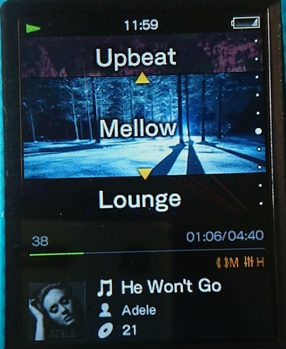DVDdoug
Major Contributor
- Joined
- May 27, 2021
- Messages
- 3,033
- Likes
- 3,995
A couple of notes about Audacity & GoldWave...
Audacity is just checking the peak levels and it can give you false-positive and false negatives. If you have a waveform that's clipped and "shows red", running the amplify effect with a negative amplification (attenuation) will lower the level and you can "hide" the clipping from Audacity but of course the distortion isn't removed.
Or, if you amplify or boost the bass (or something) and it starts to show red but the waveform isn't clipped (yet). Audacity uses floating-point internally so it essentially has no upper (or lower) limits and Audacity itself won't clip. If you export as a regular integer WAV the exported file can be clipped, or if you play it a full-digital volume, your DAC will clip. If you lower the volume before exporting, everything will be OK.
MP3 can go over 0dB without clipping, and MP3 compression changes the wave shape making some peaks higher and some lower (without changing the sound of the dynamics). It's not unusual for MP3s to go over 0dB and "show clipping" in Audacity. And again, these MP3s can will clip your DAC if you play them at full digital volume.
If dynamic range is measured using the crest factor (peak to RMS ratio) the MP3 will give a "better" DR measurement. A similar thing happens through the process of cutting & playing a vinyl record so the vinyl record will often "measure better" than the digital even though they were made from the same master and the dynamics sound the same.
GoldWave also works in floating-point but the MP3 decoder puts-out integer data. So the same MP3 that goes-over 0dB in Audacity will be clipped to 0dB in GoldWave. (If you open a floating-point WAV in GoldWave it can go over 0dB.)
GoldWave can give you the LUFS loudness, and the related EBU R128 Loudness Range, which IMO is a better way of measuring dynamics than using the "DR" crest factor.
Audacity is just checking the peak levels and it can give you false-positive and false negatives. If you have a waveform that's clipped and "shows red", running the amplify effect with a negative amplification (attenuation) will lower the level and you can "hide" the clipping from Audacity but of course the distortion isn't removed.
Or, if you amplify or boost the bass (or something) and it starts to show red but the waveform isn't clipped (yet). Audacity uses floating-point internally so it essentially has no upper (or lower) limits and Audacity itself won't clip. If you export as a regular integer WAV the exported file can be clipped, or if you play it a full-digital volume, your DAC will clip. If you lower the volume before exporting, everything will be OK.
MP3 can go over 0dB without clipping, and MP3 compression changes the wave shape making some peaks higher and some lower (without changing the sound of the dynamics). It's not unusual for MP3s to go over 0dB and "show clipping" in Audacity. And again, these MP3s can will clip your DAC if you play them at full digital volume.
If dynamic range is measured using the crest factor (peak to RMS ratio) the MP3 will give a "better" DR measurement. A similar thing happens through the process of cutting & playing a vinyl record so the vinyl record will often "measure better" than the digital even though they were made from the same master and the dynamics sound the same.
GoldWave also works in floating-point but the MP3 decoder puts-out integer data. So the same MP3 that goes-over 0dB in Audacity will be clipped to 0dB in GoldWave. (If you open a floating-point WAV in GoldWave it can go over 0dB.)
GoldWave can give you the LUFS loudness, and the related EBU R128 Loudness Range, which IMO is a better way of measuring dynamics than using the "DR" crest factor.


